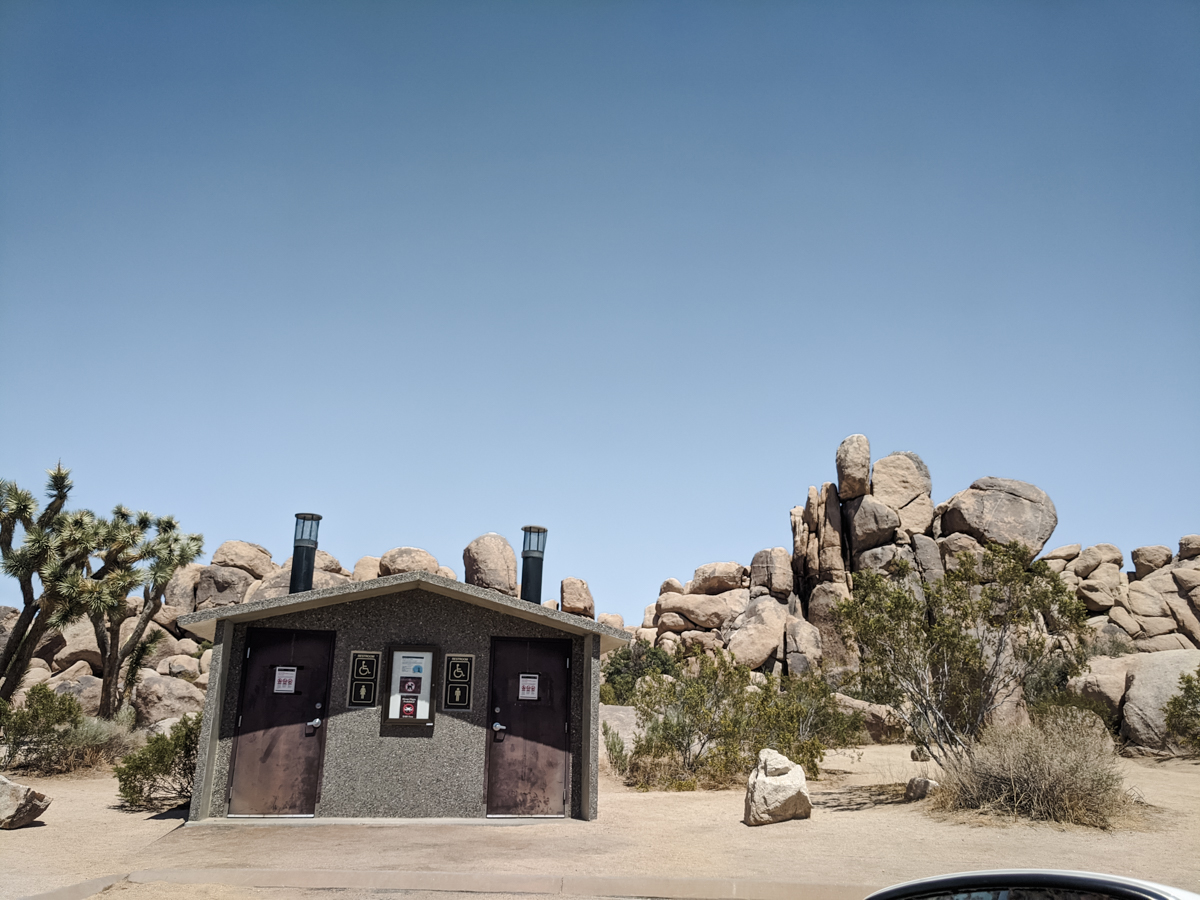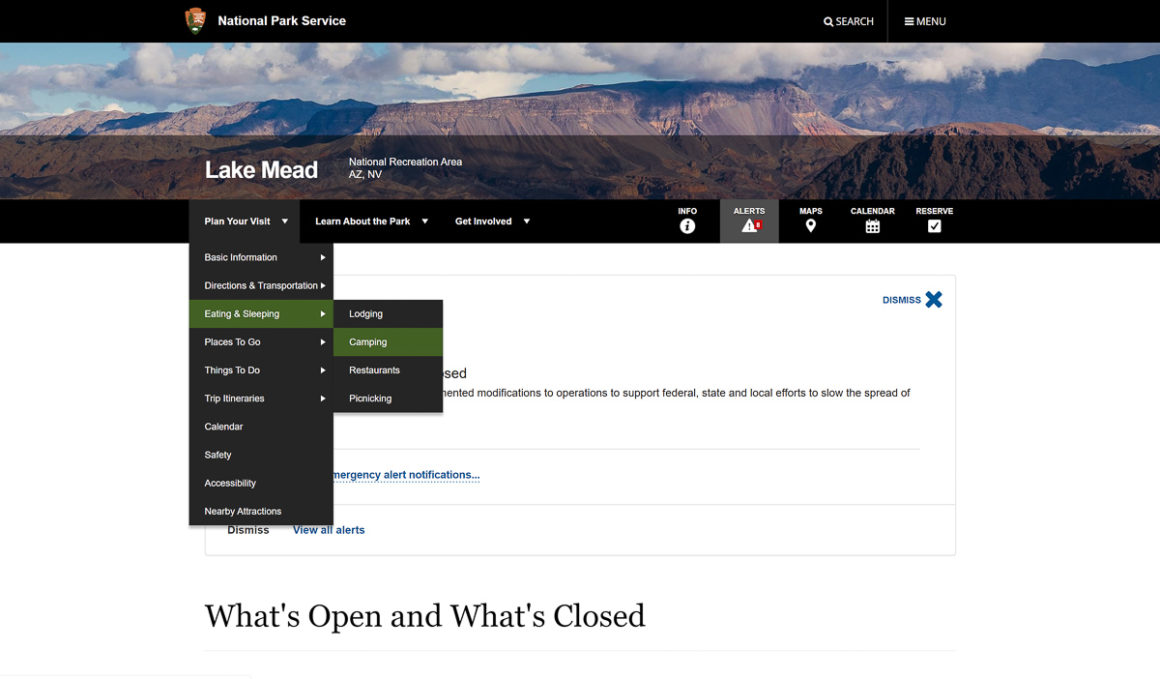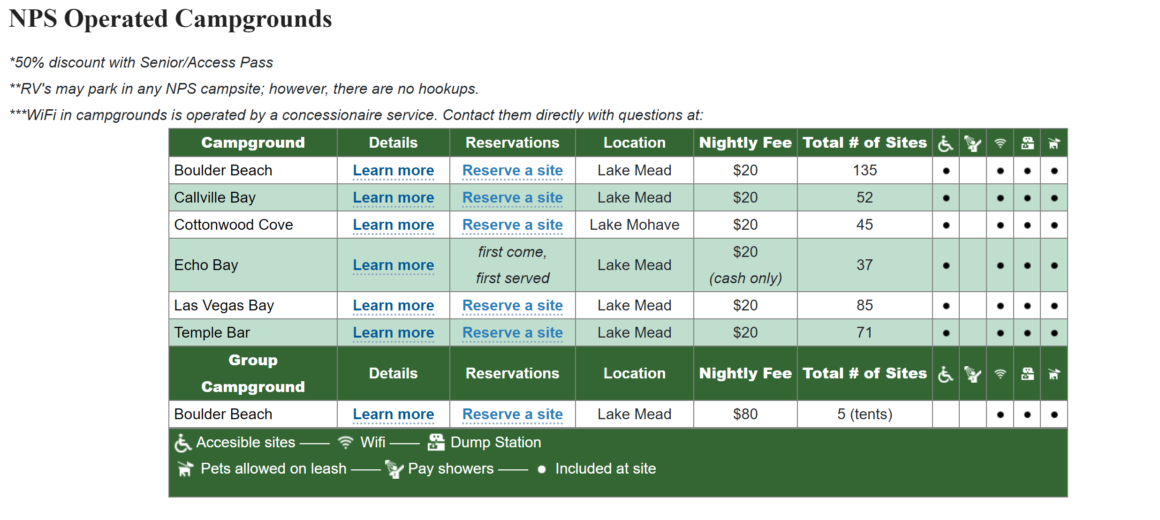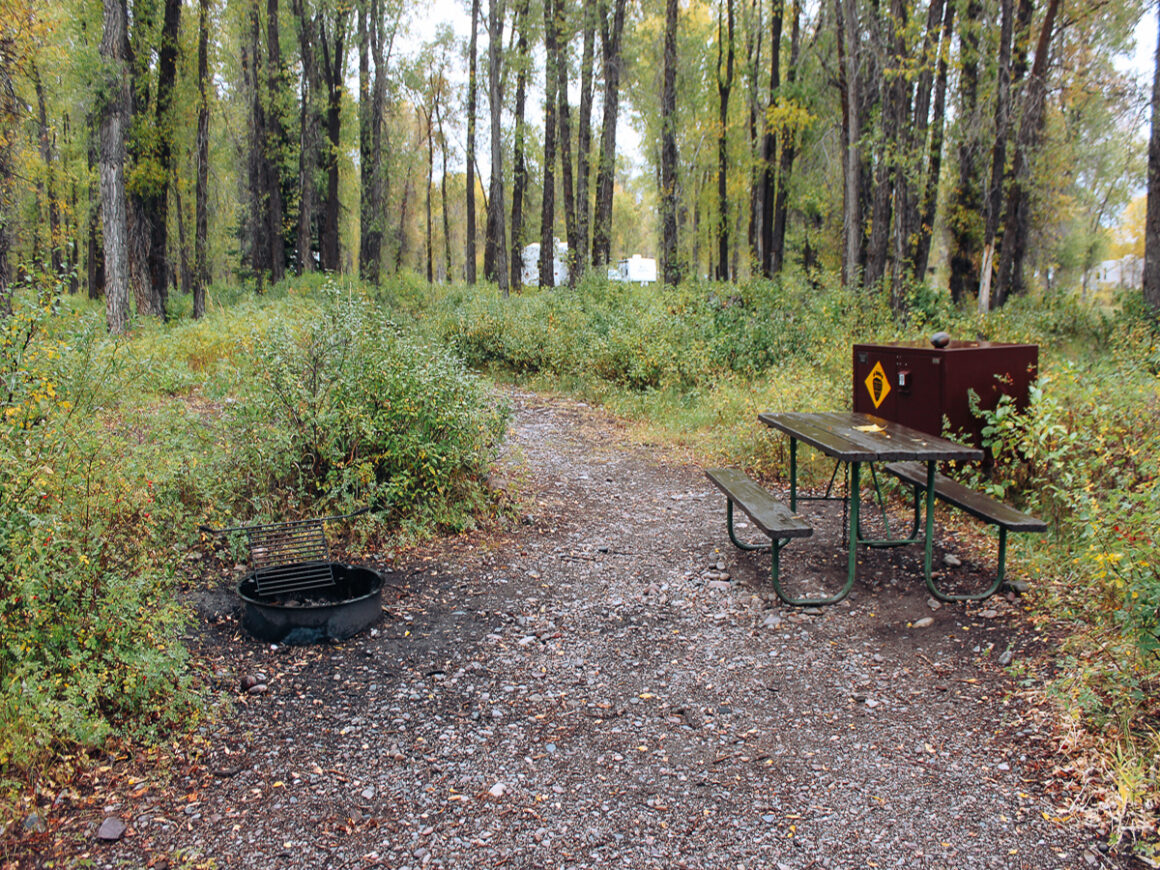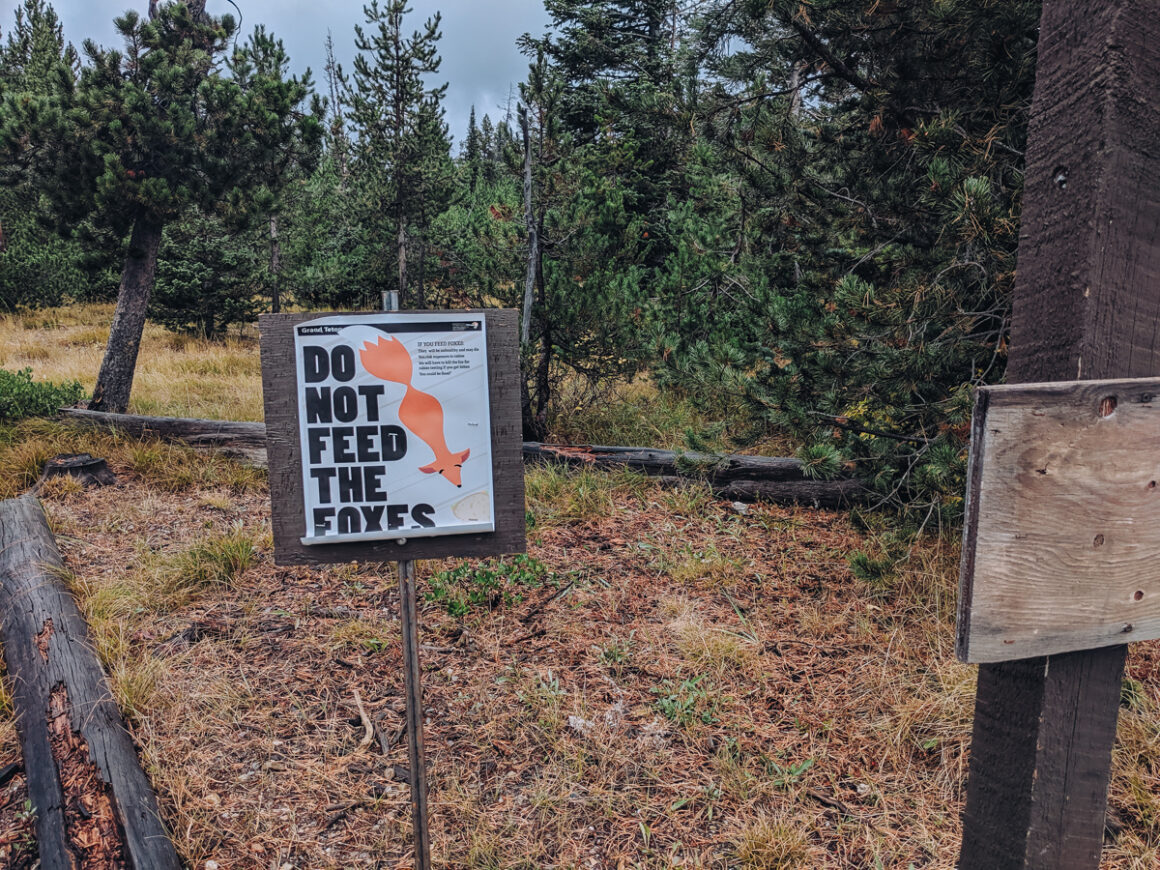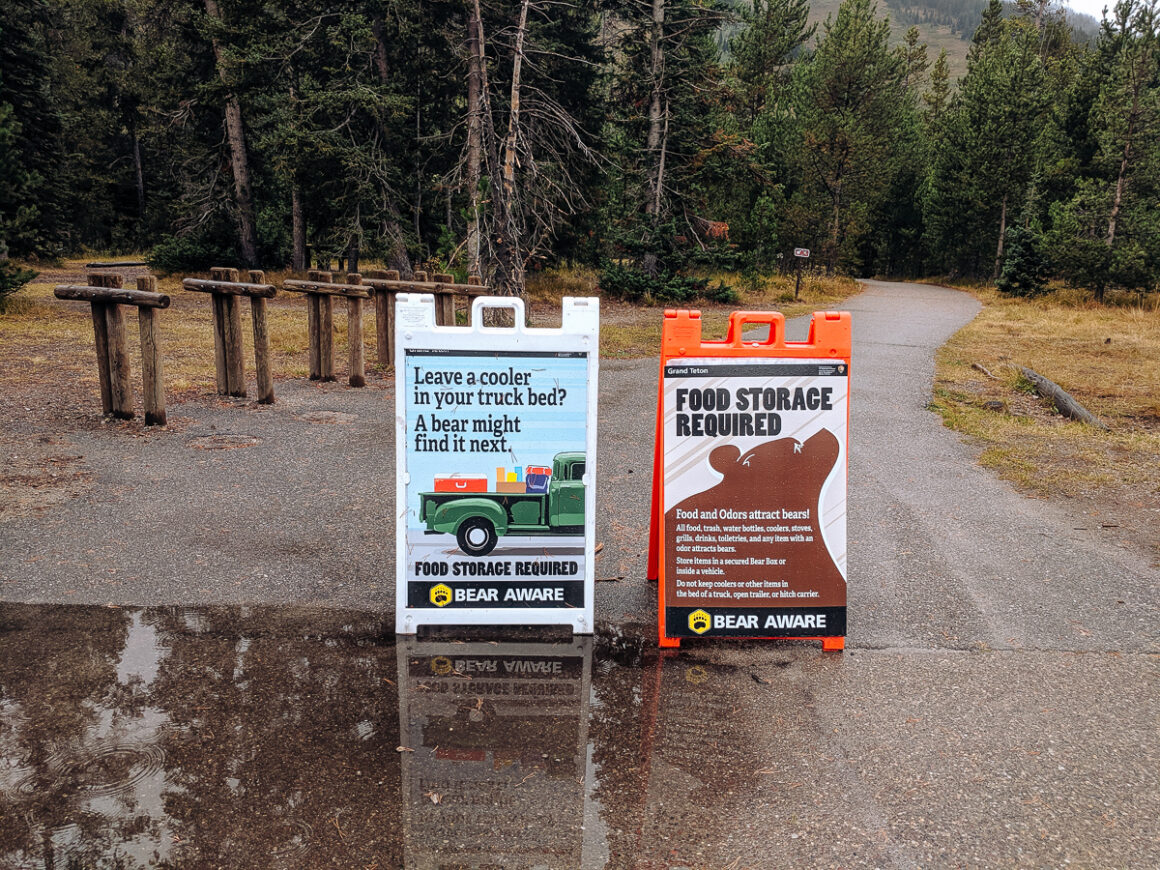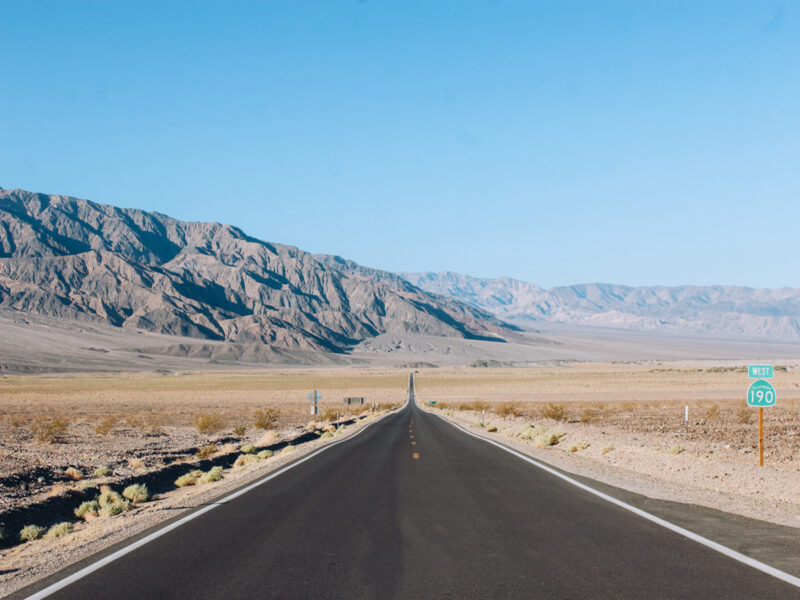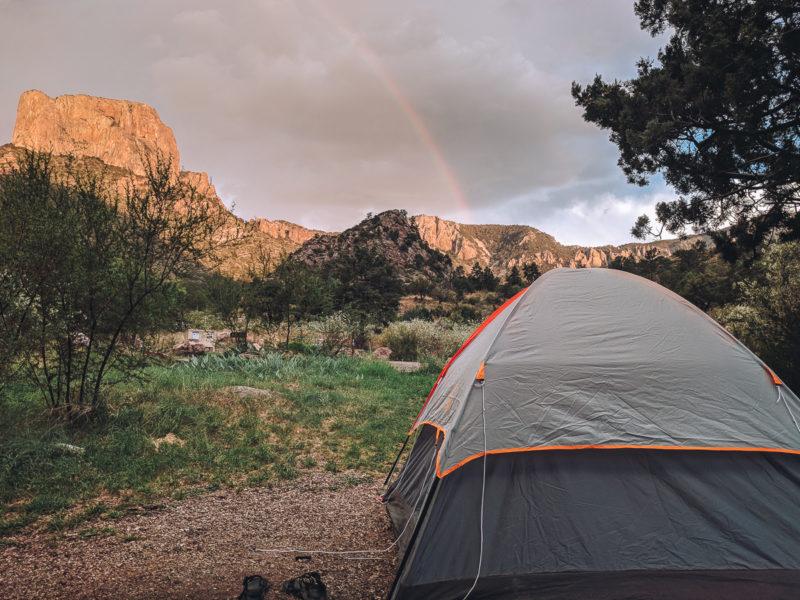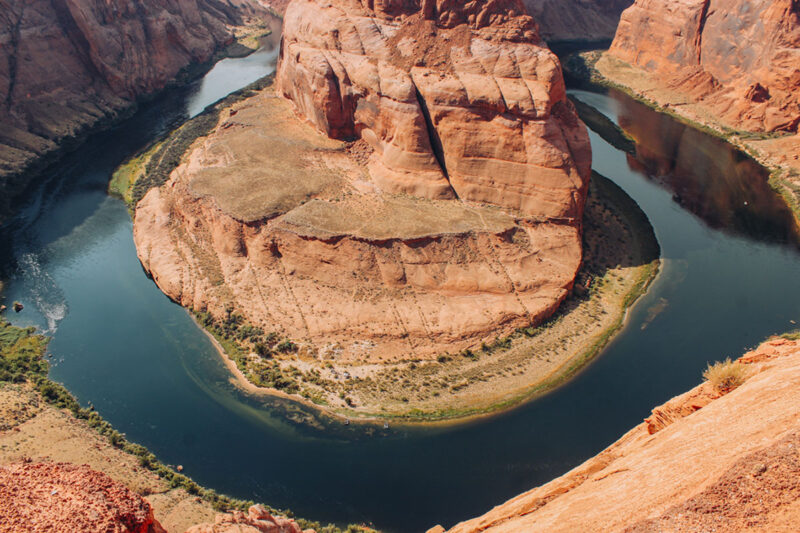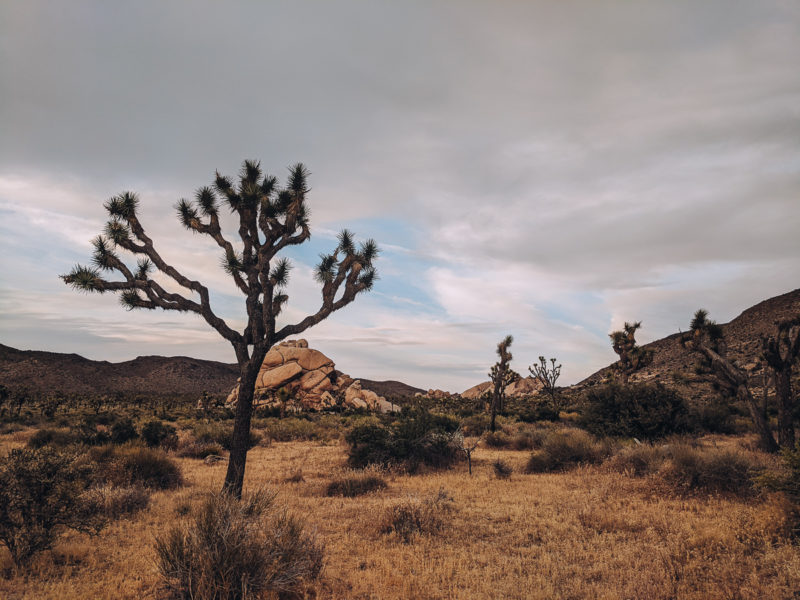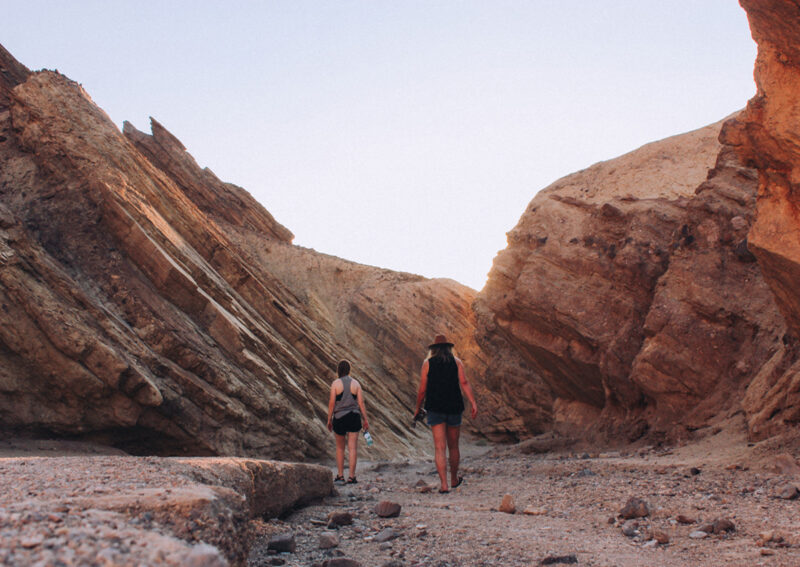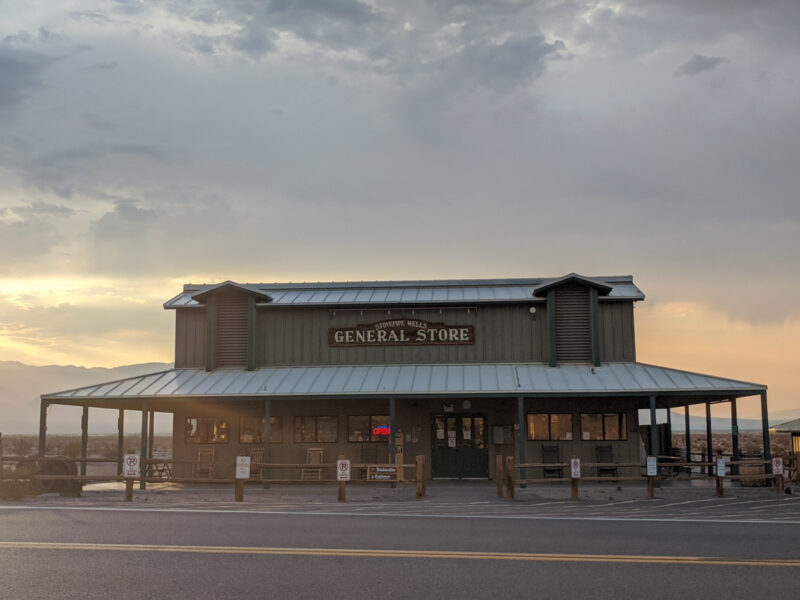Camping in a National Park Made Easy: 9 Essential Tips
For road trippers and those on a budget, camping in a national park is an additional way to get the most out of visiting a park. Park campgrounds are often located in convenient areas and that means you’ll spend less time driving around and more time enjoying the scenery.
In large spread out parks like Death Valley National Park and Big Bend National Park, camping inside the park makes a huge difference in your time management when you don’t have to wait in line to enter the park every day.
However, some campers might find national park campgrounds a bit different from private campgrounds, with more rules and regulations than they are used to and less convenience and amenities. If you aren’t prepared, some of those differences might affect your camping experience.
This article may contain affiliate links. That means I may earn a commission, at no extra cost to you, if you book or buy something through a link I share. This keeps Southerner Says online and on the road. Thank you for your support.
Camping in a National Park
Not being prepared or having no idea of what to expect when camping in a national park can either make or break your camping trip. Thorough planning is essential for the best experience. The good news is you can find out just about anything you need to know about national park camping before you get there.
There are a countless number of blogs and personal experiences from campers, like me, to help you out. Plus, nps.gov is a wealth of info. Keep reading for, what I consider, are some of the most useful tips to help you get the most out of camping in a national park.
Purchase an America the Beautiful Pass
While not directly related to camping per se, if you’re a frequent visitor to national parks, one of the savviest things that you can do is purchase an America the Beautiful Park Pass. Not only does this annual pass save you money but another perk is that it can also can help you get into some busier parks quicker via designated lanes for passholders.
A steal at $80 USD, the America the Beautiful pass, can be used at over 2k interagency sites across the country. That includes national parks, national forests, Bureau of Land Management property and even some state parks and other public lands. There’s even a senior pass that saves money at campgrounds.
The pass can be purchased directly at the entrance station when entering a national parks or can purchased online, ahead of time, at the government’s USGS store or REI, who ever though they aren’t affiliated with the National Park Service, donates 10% of the proceeds to the park service.
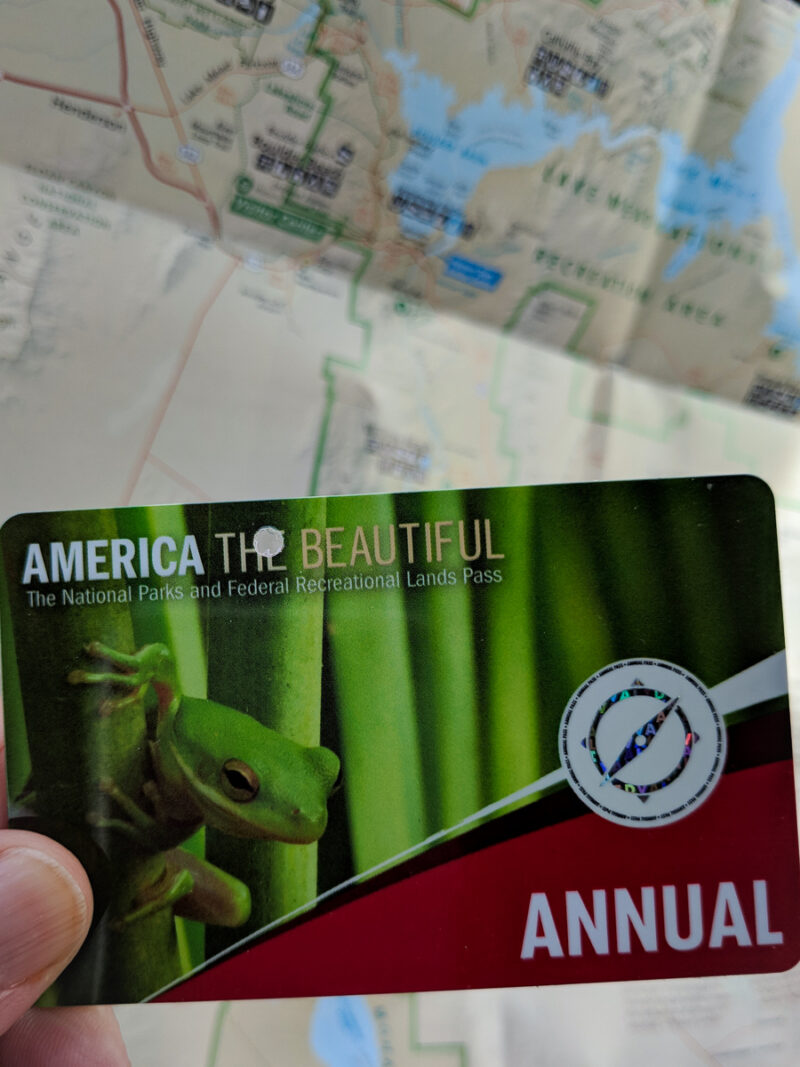
Research As Much As You Can Before You Go
Some people have the idea that national parks are just amusement parks with trained animals. However, that couldn’t be further from the truth. Although the national park service manages and oversees the parks, national parks are wild, untamed areas with wildlife.
Therefore, it’s crucial to learn as much as you can about the park and the campground you plan on visiting before you get there. Answers to questions like what kind of equipment is allowed in the campground to park alerts and closures that might impact your visit are available on the park service’s official website nps.gov.
For specific park information on nps.gov, simply search for the park you’re interested in visiting to see a general overview of that park. Then for more detailed help, click on the information tabs at the top.
For example, camping info can be found under the Plan Your Visit tab at the top. Once that tab is open, scroll down to Eating and Sleeping. Hovering over that option expands the tab even more to show the camping and lodging options available in the park.
Select Camping to learn about campgrounds and backcountry camping. Typically there will be a list, or a table, outlining important campground particulars like number of sites, amenities and prices, etc.
As you browse, you’ll probably notice that developed national park campgrounds fall into two categories: campgrounds maintained by the National Park Service (NPS) and campgrounds managed by an authorized park concessioner.
An authorized concessioner is a business with which the NPS has a contract to provide services in the parks. In some cases, the concessioner is able to provide things the NPS doesn’t, like Wi-Fi or activities and tours that might be difficult for the NPS to offer.
But don’t worry. The park service still monitors the quality of of those companies, so you can still count on a good, safe experience.
Use Recreation.gov For Info About National Park Camping
Nps.gov isn’t the only resource for national park camping info. When you’re ready to book a campsite in campgrounds maintained by the park service, Recreation.gov, is the website used to do that. The website also offers an abundance of information.
One of the most helpful features are the campground maps that show the campsite locations and the placement of important amenities like water, trash cans and the most critical, the bathrooms. If you are a tent camper, you know what I mean. No one wants to do a long walk in the middle of the night.
Many times, there’s even a photo of the campsite so you can see if you like the layout. Most national park campsites provide a parking spot, a place for a tent – some even have a gravel or prepared foundation) a picnic table, and a fire ring.
Some will even have bear boxes but more on that later. You’ll also be able to read reviews and check availability of phone service based on other camper’s experiences.
To reserve a site, most campground reservations can typically be made up to six months in advance. Although, for reservations in popular parks like Yellowstone and Yosemite, that sell out quickly, you’ll need to plan as much in advance as you can.
However, rules differ from park to park. And a few campgrounds, like Chisos Basin Campground in Big Bend National Park, hold a few campsites back for a 14 day advance release. That way, people who aren’t advance planners have the opportunity to book last minute campsites.
All this info can be found on the park’s website and recreation.gov. Note: recreation.gov allows you to browse their site for campground info and planning but once you’re ready to reserve a site, you’re required to create an account.
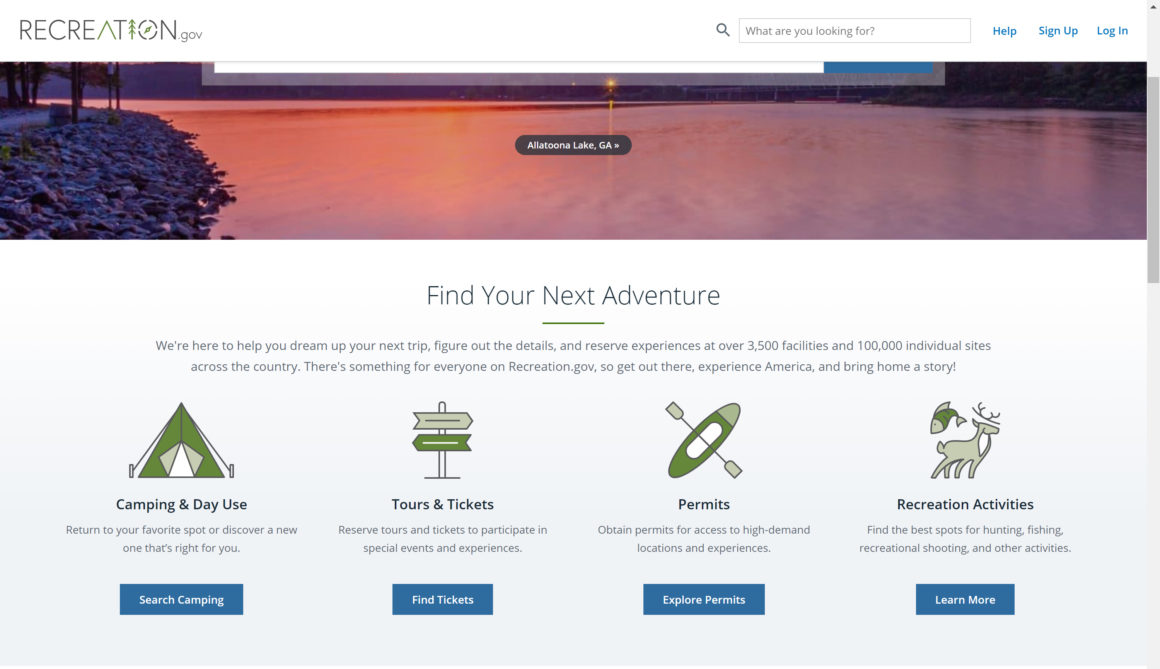
Utilize First-Come First-Served Campgrounds
As you start planning camping in a national park, you’ll also probably notice that not all campgrounds accept reservations but instead use what’s called first-come first-served camping.
What is first-come first-served? Basically, it’s exactly what it sounds like. You show up to the first-come first-serve campground and if there’s a campsite available, you camp in it, no reservations necessary.
In busier parks, getting a first-come first-served site isn’t easy. You need a good plan and you’ll have to arrive pretty early to have a chance of getting a campsite. Understandably, for some people (and families) the stress of waiting till the last minute is too much.
But for the spontaneous traveler and those willing to roll the dice, first-come first-served campgrounds can be a lot of fun. I’ve gotten some really great campsites. For more info about how it works read my first-come first-served article.
Know the Campground Rules
No matter what kind of park campground you’re staying in, or how much you read about the campground ahead of time, for the best national park camping experience, stop at the information stand at the entrance when you arrive.
In fact, it’s a necessary stop for anyone utilizing first-come first-served camping, since this area also serves as the campsite registration and payment area. But actually every camper should stop. Even if you have a reservation.
The information stand is the lifeline of the park and a best place to familiarize yourself with essential campground rules and regulations. Things like quiet hour times – yes, there are quiet hours – pet policies and other important info will be on display here.
Since campgrounds differ, knowing all the rules at your campground can make your stay a lot smoother and help you avoid problems and even fines. And even though most of the info can be found on nps.gov, the info board is up-to-date, daily info.
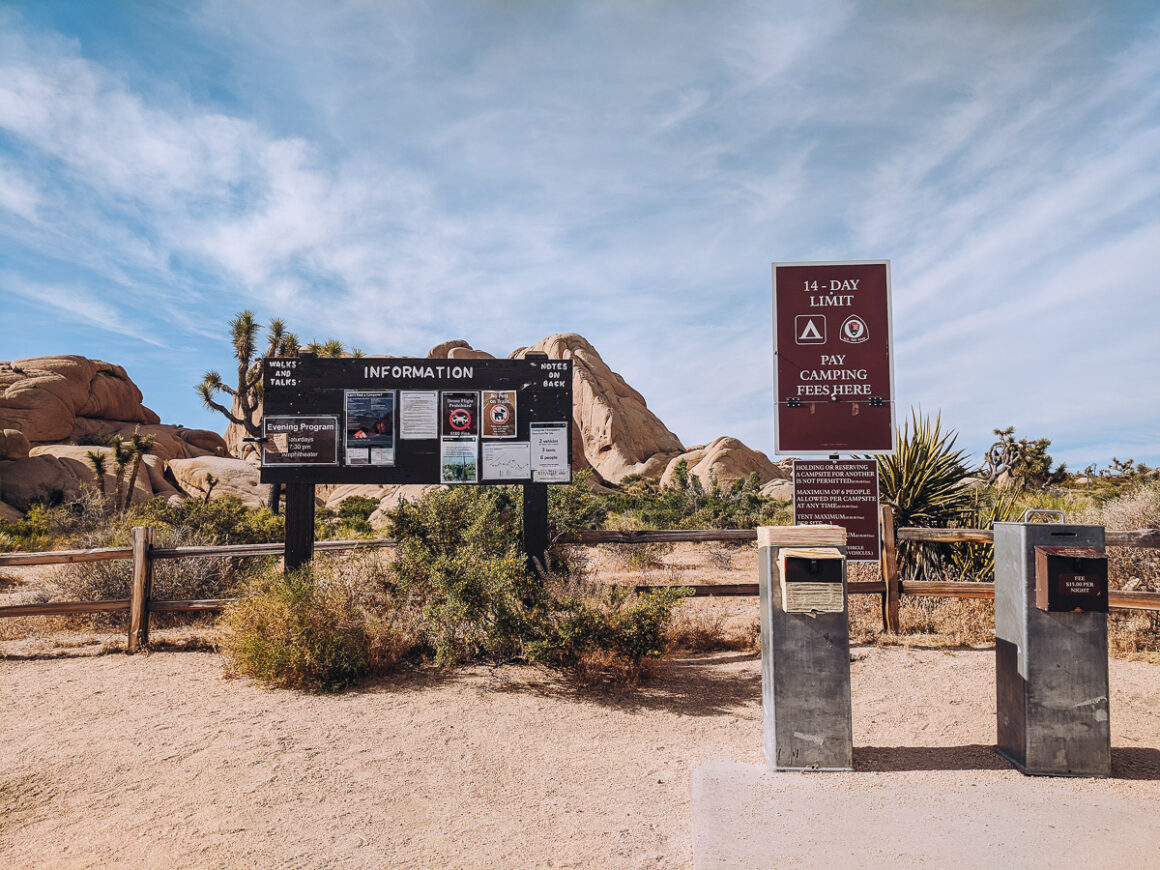
Check-in With the Campground Host
While it’s not mandatory, another one of the best things you can do when camping in a national park is talk to the campground host. If you’re staying in a first-come first-served campground, then your paths will probably cross when he or she makes their daily rounds.
But by proactively seeking them out you can learn plenty about the campground and the area. Most campground hosts are long-term campers and experienced in the outdoors. Many of them are familiar with the area and can offer advice about trails and hikes and other must see’s or events in the park.
They can also give up-to-date info about the latest happenings in the campground. On one of my last camping trips, the campground host alerted us to a night-prowling bear with cubs situation. Even though I’m always am bear aware, I was appreciative of that warning.
Be Alert to Fire Danger When Camping in a National Park
Let’s face it, the highlight of camping in a national park is sitting around the fire after the sun goes down. Conveniently, most park campsites have designated fire rings for you to use. But, before you strike that match, make sure fires are allowed.
At times, if the wildfire risk is high, even charcoal fires are prohibited. Although, most campgrounds almost always allow the use of propane camp stoves, you still need to doublecheck to verify.
Even though the NPS lists the campground rules on nps.gov, fire hazard is something that can change quickly and might not get updated daily. Just another all important reason to stop by the entrance stand or chat with the campground host for up to the minute updates.
Some parks, and the majority of national forests, have Smokey the Bear fire danger signs displaying the daily fire risk. Pay close attention to those. Again, conditions can change quickly so be sure and check often.
One other thing to note about building a fire is that the wood should be local, purchased firewood. Generally, national park campgrounds prohibit bringing in foreign wood and gathering wood for fires. You should also have enough water on hand to put the fire out.
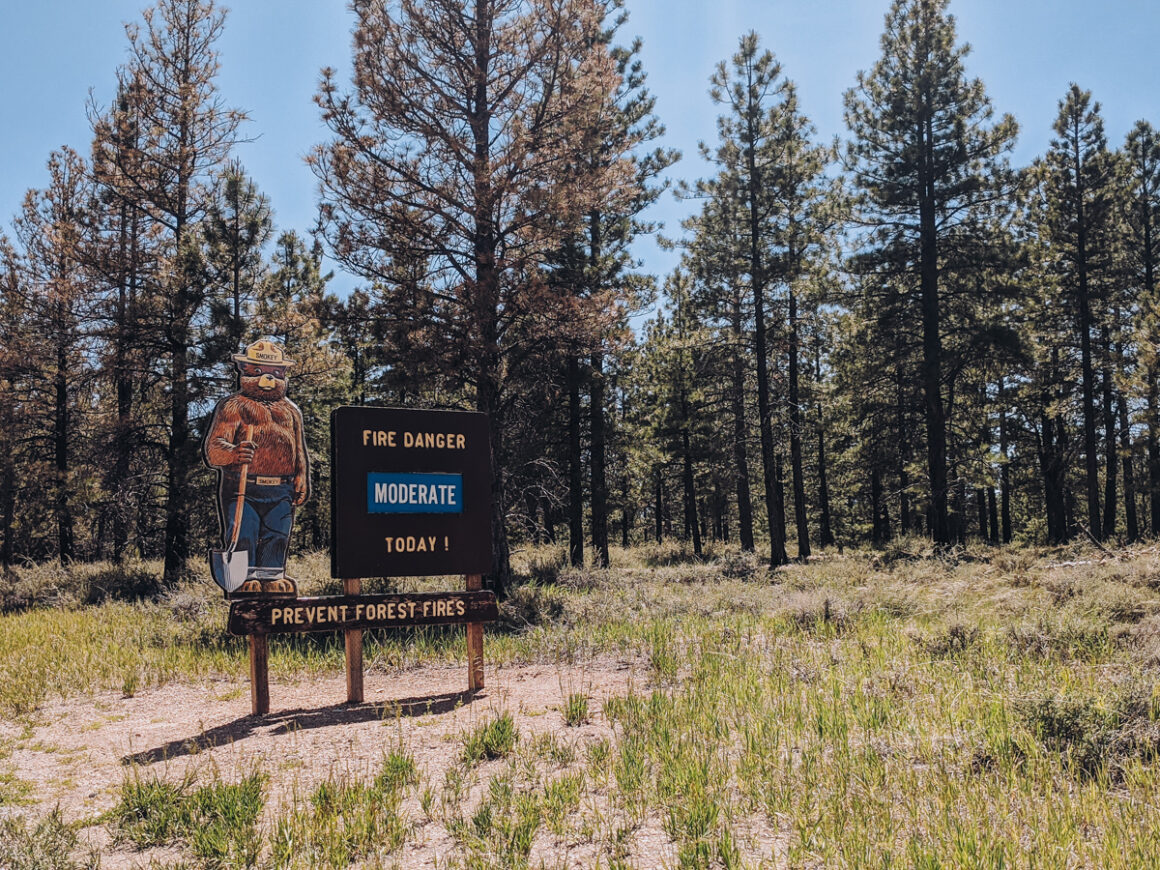
Know How to Properly Store Food When Camping in a National Park
No doubt you plan on to eating and cooking when you’re camping in a national park so it’s imperative that you know how to properly store your food and groceries.
If you are camping in bear country, some campgrounds provide bear boxes. And you definitely want to use them! Never store food in your tent or even in the car unless it’s in the trunk. Additionally, keep your car locked so those clever bears don’t open the doors.
Even if the campground you are staying in doesn’t have bears, there’s other wildlife around so it’s always good to pack your food up. Racoons and other small critters are notorious for stealing food. Don’t leave food, coolers and trash out in the open if you can help it.
It’s easy for wildlife to get accustomed to food left out or dropped on the ground. This can be catastrophic. Animals potentially will either have to be moved or worse, euthanized, when they associate food with humans. The saying is “a fed bear is a dead bear” but the same goes for any wildlife.
Be Prepared For National Park Bathrooms
The hardest part of camping in a national park, or anywhere for that matter, is the bathroom situation. I don’t think there’s a single soul who enjoys that part of the camping experience. You definitely have to be prepared. Developed national park campgrounds will always have a bathroom of some sort but the exact type of bathroom could vary. Knowing just what to expect makes it much easier to prepare for.
Depending on the remoteness of the park, most paid, developed national park campgrounds, will have more normal bathrooms with plumbing and running water. The bathrooms aren’t fancy but are usually clean. Sometimes they are heated and sometimes they aren’t and typically the water is cold water only.
Less developed, and primitive campgrounds, without running water will usually have pit toilets. These toilets are basically a structure over a hole in the ground. I won’t go into how they work but let’s just say a real bathroom is preferable because pit toilets can be a little odd and stinky.
Pit toilets should have toilet paper to use but it’s always smart to keep some extra on hand. If the park you’re staying in is a popular park, then the toilets might not be maintained on weekends or holidays, and the tp will run out. This goes for other bathrooms in the park, as well.
Also, since there’s no running water, some pit toilets have hand sanitizer on hand but some don’t. Best advice is to be prepared and just carry your own. One more very important thing about pit toilets: you should never throw trash in the hole. REI has a really informative article about surviving pit toilets that’s worthy of a read.
National park campgrounds normally don’t have showers but occasionally you might run across one that does. If you are lucky enough to encounter one, again there’s a few things you’ll want to have with you. Shower shoes or flip flops are a must for public showers. You have no idea who’s been in there and what was on their feet. Protect your feet from that bacteria.
You’ll also want to bring soap and any other bathing products you might need or want. A microfiber washcloth and towel, that dries quickly, comes in handy as well. And most of them fold down to almost nothing and are easy to pack.
Camping in a National Park FAQ
Will the National Park Campground Have Wi-Fi?
Most national park campgrounds that are managed by the NPS do not have Wi-Fi. In fact, it’s common to not have cell service in a national park. If a park is a concessioner run park, sometimes Wi-Fi is available in the campground.
Is Camping in a National Park Free?
No. Even though you might think that camping in a national park is free, the majority of parks charge a fee for expenses and maintenance. Fees vary from park to park. Occasionally, you will might one that’s free but it’s not too common.
How Long Can You Camp in a National Park Campground?
Park campgrounds have limits on how long you can camp there. The limits vary from park to park. Most developed, paid campground allow you to stay 14 days.
Some campgrounds that have free or dispersed camping allow you to stay longer before requiring you to move on. It also depends on what kind of park unit it is too. Recreation areas have different campground rules and are a bit more lenient.
Can You Camp Anywhere in a National Park?
The simple answer is no. You cannot camp just anywhere in a national park. The National Park Service and concessioners work hard to give visitors the best national park experience but national parks aren’t amusement parks.
The national park system was created to protect these special places. Although they are public lands, visiting them is a privilege. Regulations and campgrounds exist to limit unmonitored impact on the land by humans.
Will There be Electricity in the National Park Campground?
Most national park campgrounds, managed by the NPS, do not provide electricity. Water is usually available throughout the campground and at the very least, the park visitor center or bathrooms located at the visitor center.
Final Thoughts About Camping in a National Park
Camping in a national park is one of the best things you can do in a national park. If you are new to camping and feel a little overwhelmed about heading into a national park to camp, then try a local or state park first or even your own backyard.
For newbies, camping somewhere else first is also the easiest way to practice setting up a tent and become more comfortable doing it. Wherever you camp, make sure to always follow Leave No Trace principles for the outdoors and leave your campsite, and the park, better and cleaner than when you got there.
See you on the road!


